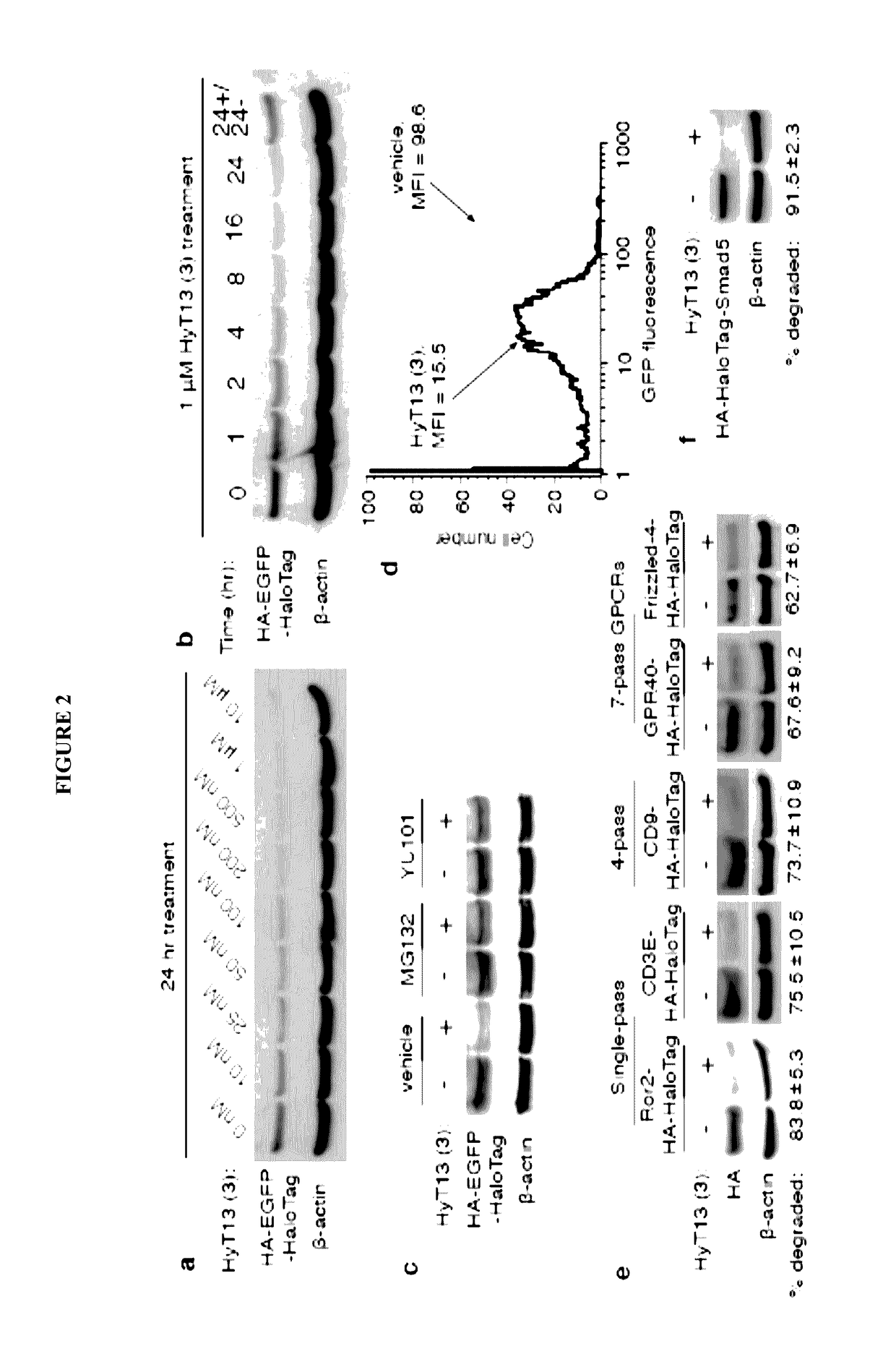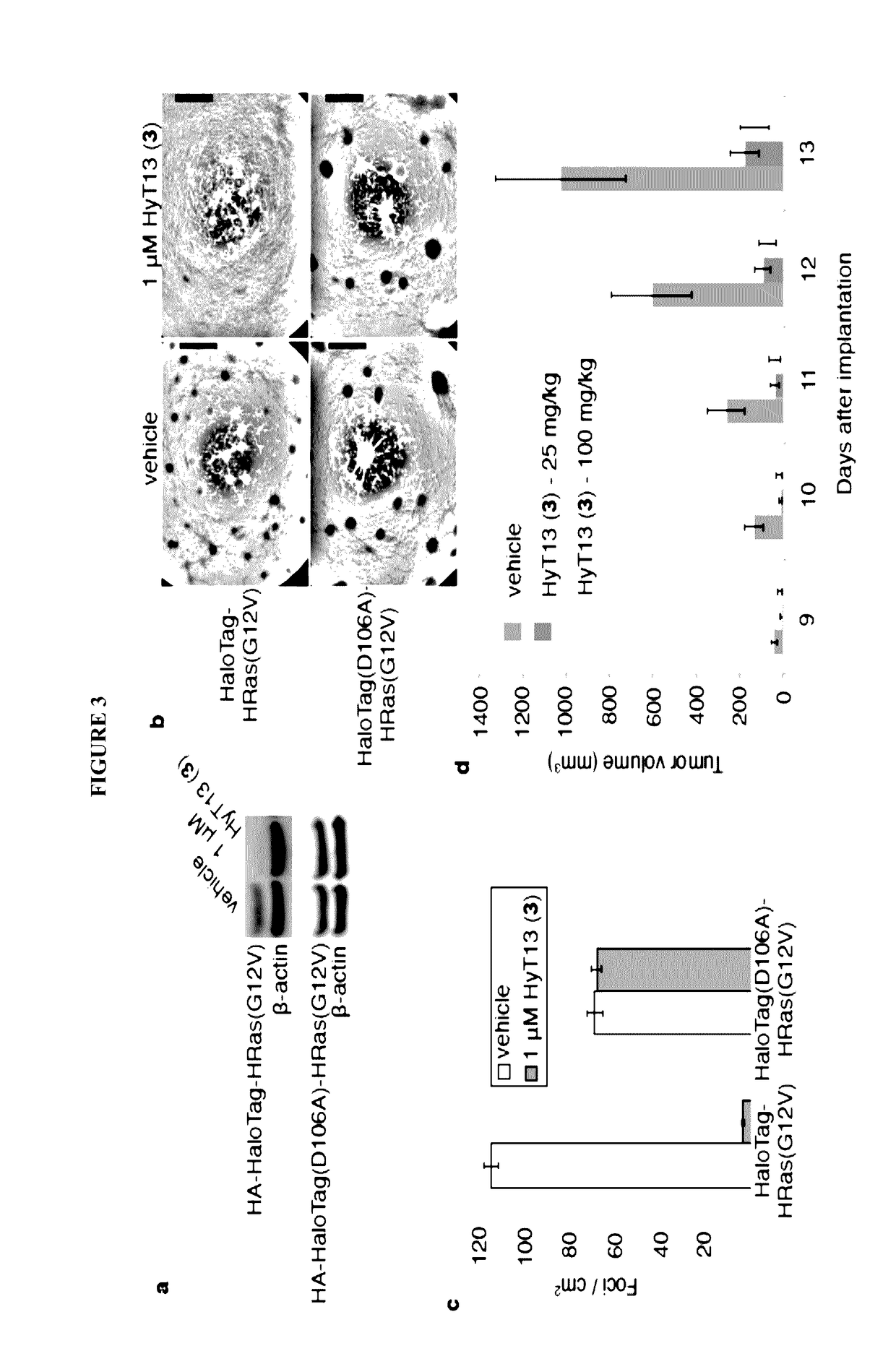Small-molecule hydrophobic tagging of fusion proteins and induced degradation of same
a technology of fusion proteins and hydrophobic tags, which is applied in the direction of fusions with degradation motif, instruments, drug compositions, etc., can solve the problems of inability to perturb the function of any intracellular protein, the challenge for biologists remains to identify, and the inability to validate potential targets in vivo
- Summary
- Abstract
- Description
- Claims
- Application Information
AI Technical Summary
Benefits of technology
Problems solved by technology
Method used
Image
Examples
examples
Overview
[0156]To develop a general method to degrade any intracellular protein using a small molecule, we sought to enlist the cellular protein quality control machinery. The burial of internal hydrophobic residues within a protein's core is a major driving force behind protein folding, and, correspondingly, exposure of such hydrophobic regions is considered a hallmark of an unfolded protein21-23. For instance, the endoplasmic reticulum Hsp70-class chaperone BiP specifically binds hydrophobic amino acids and helps slow-folding proteins to fold22,24. Should the cell fail to fold the target protein correctly, the unfolded protein is eliminated by either the ubiquitin-proteasome system or autophagy25. We sought to mimic the partially denatured state of a protein by appending a hydrophobic tag on its surface in order to induce its degradation. To test this hypothesis, we selected the HaloTag dehalogenase system developed by Promega as the fusion protein component26. This system was chos...
PUM
| Property | Measurement | Unit |
|---|---|---|
| volume | aaaaa | aaaaa |
| volume | aaaaa | aaaaa |
| pH | aaaaa | aaaaa |
Abstract
Description
Claims
Application Information
 Login to View More
Login to View More - R&D
- Intellectual Property
- Life Sciences
- Materials
- Tech Scout
- Unparalleled Data Quality
- Higher Quality Content
- 60% Fewer Hallucinations
Browse by: Latest US Patents, China's latest patents, Technical Efficacy Thesaurus, Application Domain, Technology Topic, Popular Technical Reports.
© 2025 PatSnap. All rights reserved.Legal|Privacy policy|Modern Slavery Act Transparency Statement|Sitemap|About US| Contact US: help@patsnap.com



